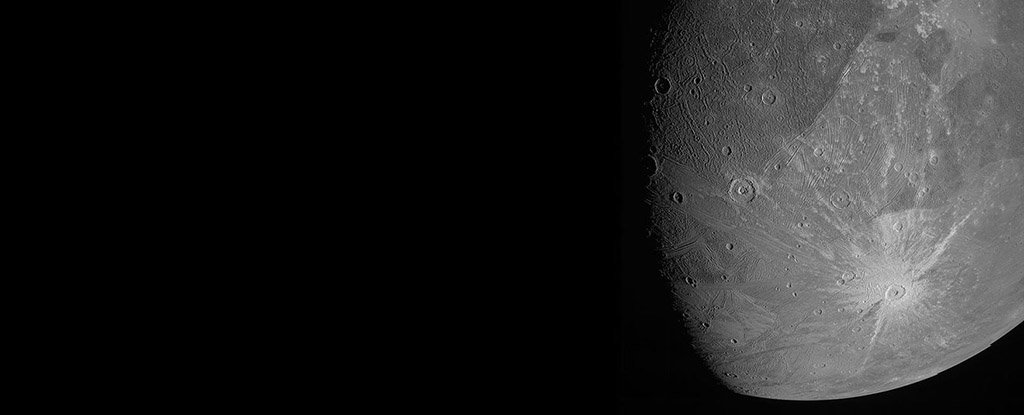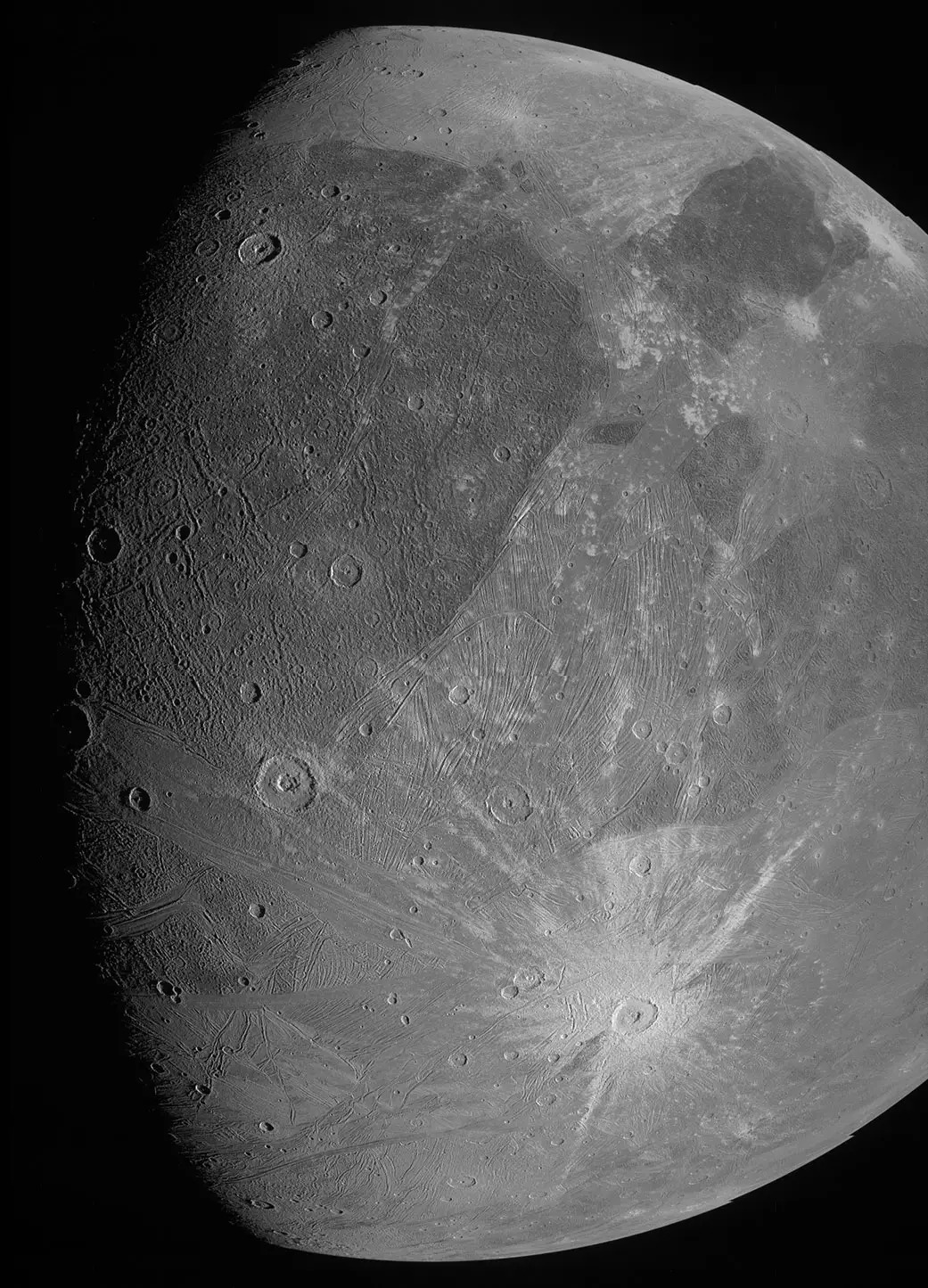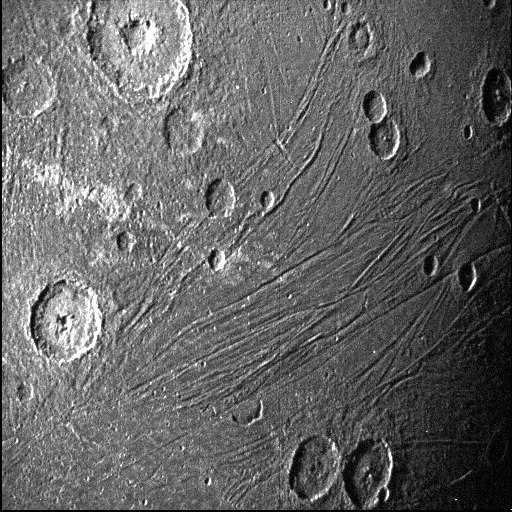
Posted on 06/09/2021 9:44:20 AM PDT by Red Badger

Grey, heavily cratered, and peering out from the black of space, Ganymede looks a lot like our moon. But the icy rock is more than 650 million kilometers (400 million miles) away – it's the largest moon in the Solar System, and it circles Jupiter.
NASA's Juno spacecraft has been rocketing around Jupiter since 2016, but on Monday, it zipped past Ganymede, coming within 1,000 km (650 miles) of the moon. No spacecraft had gotten that close in more than two decades – the last approach was NASA's Galileo spacecraft in 2000.
In just 25 minutes, Ganymede went from being a distant point of light from Juno's vantage point to a looming, round disk, then back to a point of light. It was just enough time for the probe to snap five photos.
NASA released the first two images on Tuesday; they're the most detailed snapshots ever captured of the gargantuan moon.
"This is the closest any spacecraft has come to this mammoth moon in a generation," Scott Bolton, who leads the Juno spacecraft team, said in NASA's press release.
"We are going to take our time before we draw any scientific conclusions, but until then we can simply marvel at this celestial wonder – the only moon in our Solar System bigger than the planet Mercury."
Scientists believe that Ganymede may host an ocean of salty water 800 km (500 miles) beneath its icy shell – which would hold more water than Earth does. It's also the only moon in the Solar System with its own magnetic field, which creates an aurora at its poles. Scientists hope the Juno flyby will help them learn more about both Ganymede's ice shell and its magnetic field.
The first Juno image, below, captures almost an entire side of the ice-encrusted moon. Each pixel covers about 1 kilometer (0.6 miles).

(NASA/JPL-Caltech/SwRI/MSSS)
This image is just from the Juno camera's green-light filter. In the coming days, NASA expects to receive more images from the spacecraft, including those captured with its red- and blue-light filters. That will allow the agency to create a colorful portrait of Ganymede.
Juno's black-and-white navigation camera also snapped a photo, below, of Ganymede's dark side.

(NASA/JPL-Caltech/SwRI/MSSS)
It's visible thanks to light scattered from Jupiter.
This image is just from the Juno camera’s green-light filter. In the coming days, NASA expects to receive more images from the spacecraft, including those captured with its red- and blue-light filters. That will allow the agency to create a colorful portrait of Ganymede.
Juno at Ganymede Pingy!.....................
Coolness.
-297 to -171 degrees Fahrenheit of coolness.....................
I keep telling those kids not to go 4 wheeling on Ganymede but they don’t listen.
These kinds of articles send me into orbit. /rimshot
Why are the “impact” craters all perfectly round? Nothing natural about that. Would expect all sorts of scars from impacts, not just perfectly round craters. Doesn’t look natural...get out the can opener and see what’s inside -
They’re not perfectly round. It just appears that way from orbit.
Try and make one that isn't............................
Hmmm...
Maybe for that dark-side photo NASA substituted a snapshot of downtown Portland, OR...
Juno’s black-and-white navigation camera also snapped a photo, below, of Ganymede’s dark side.
Look at all those dune buggy tracks!
Tidally locked, as with our Moon.
Tidally locked, as with our Moon.
“What some call the ‘dark side’ is fully lit up right now.”
Etymologically, from a Old High German word for “hidden”.
500 miles of ice to get to liquid water?
There are two adjacent teardrop shaped ones
Gonna need a longer drill..........................
Of course it has, but its dark side would be lightly ‘illuminated’ by reflected light from Jupiter if the moon is in between the Sun and Jupiter.........................
Disclaimer: Opinions posted on Free Republic are those of the individual posters and do not necessarily represent the opinion of Free Republic or its management. All materials posted herein are protected by copyright law and the exemption for fair use of copyrighted works.